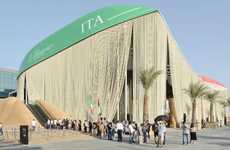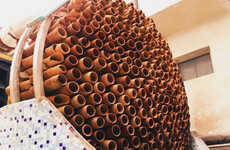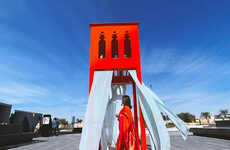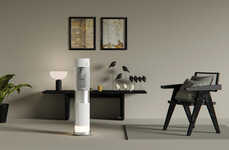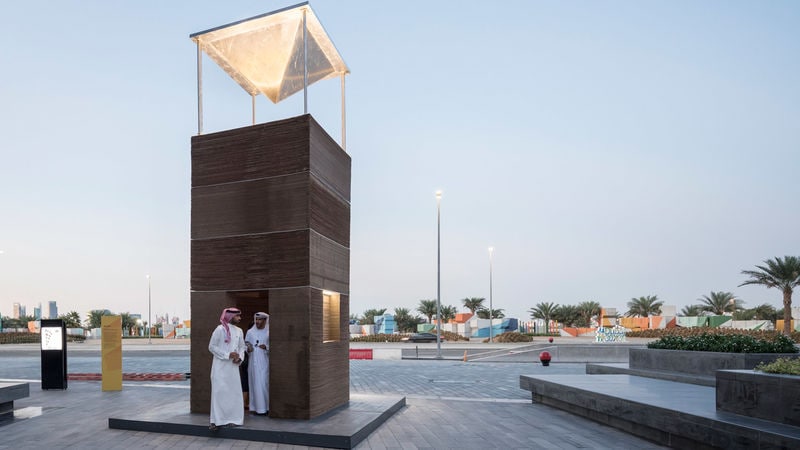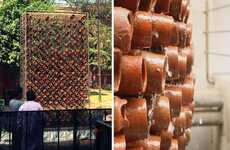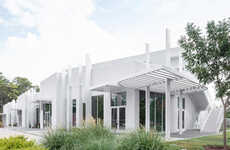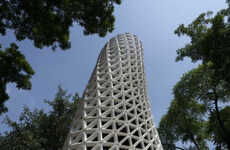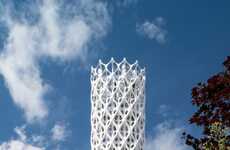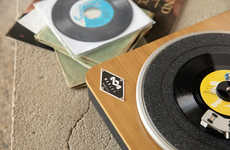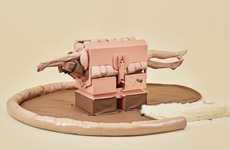
MAS Architecture Made an Air Conditioning Tower with Cardboard
JD West — November 15, 2019 — Art & Design
References: commercialinteriordesign & dezeen
MAS Architecture Studio created a sustainable air conditioning tower using cardboard and aluminum for Dubai Design Week. The tower was created as a modern take on the wind towers often found in the Arabian Gulf, while serving as a node to the great towers and buildings Dubai is known for. The one major difference with this tower is its classic approach to air conditioning, which doesn't rely on electricity to function.
While high technology and mechanical systems are typically the answer to acclimation in climates and regions like Dubai, MAS Architecture and its owners wanted to make the air conditioning tower to be zero-waste and sustainable. Known as a burjeer, it was constructed from 480 layers of reclaimed cardboard and aluminum sheets. Both materials were left untreated in order to keep the tower as organic as possible.
The tower acts as an air conditioner with the windcatcher on top of the tower catching the wind and bringing it down as a cool breeze to the people sitting in the bottom space.
While high technology and mechanical systems are typically the answer to acclimation in climates and regions like Dubai, MAS Architecture and its owners wanted to make the air conditioning tower to be zero-waste and sustainable. Known as a burjeer, it was constructed from 480 layers of reclaimed cardboard and aluminum sheets. Both materials were left untreated in order to keep the tower as organic as possible.
The tower acts as an air conditioner with the windcatcher on top of the tower catching the wind and bringing it down as a cool breeze to the people sitting in the bottom space.
Trend Themes
1. Sustainable Air Conditioning - Disruptive innovation opportunity: Explore alternative materials and methods for air conditioning that are zero-waste and sustainable.
2. Cardboard Architecture - Disruptive innovation opportunity: Explore the use of reclaimed cardboard as a construction material for various architectural projects.
3. Windcatcher Technology - Disruptive innovation opportunity: Develop innovative ways to harness wind energy for cooling and air conditioning purposes.
Industry Implications
1. Architecture - Disruptive innovation opportunity: Incorporate sustainable design principles and alternative materials in architectural projects.
2. Manufacturing - Disruptive innovation opportunity: Invest in the production of eco-friendly construction materials like reclaimed cardboard.
3. Renewable Energy - Disruptive innovation opportunity: Develop and commercialize technologies that enable the efficient use of wind energy for various applications, including air conditioning.
5.5
Score
Popularity
Activity
Freshness


